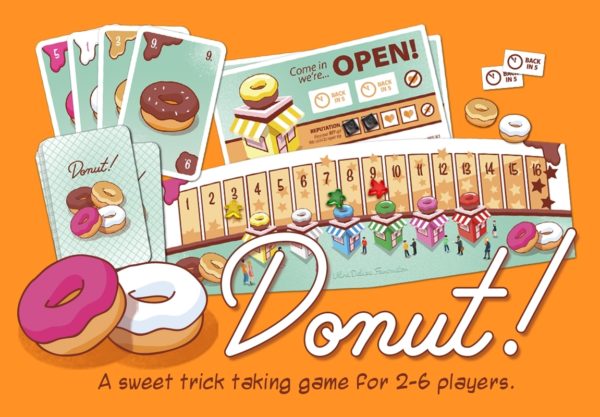
Thunderstone AdvanceMy Sordid Love Affair – Part 1
- Mechanics 95%
- Theme 85%
- Game Play 75%
- Co-op-iness 50%
- Deck Clog (monsters in your deck) 100%
What can I say? It’s complicated. You’re great. You’re fun. You’re complex while still being reasonably easy going. The stories you tell, the excitement you bring. We had a good run.
Look, it’s not you, it’s me.
No, never mind. Scratch that. It’s time to be honest.
It’s definitely you. …
It all started after friends of mine introduced me to Dominion and the concept of deck building. It was simple enough a concept. Players use the same starting deck of cards to “purchase” more cards in an effort to gradually build a more powerful deck, that should allow you to perform better turns and gather you more victory points (VP’s). At some point in that first game I played the “Village” card, which not only allows you to draw another card, but also allows you two more actions. That was when something exploded in my brain. I realized that card combos and chaining cards together was an endorphin releasing experience and I was hooked.
Flash forward a little ways into the future. I was beginning to gradually expand my board game collection and was perusing Kijiji. Someone was selling Thunderstone Advance. I researched a bit about it online and reviewers were calling it Dominion with a Dungeons and Dragons theme. I was sold and promptly arranged to purchase the game. I was not disappointed. Here’s why:
Theme
I know there are a bazillion board games out there with a fantasy theme, but Thunderstone Advance was my first foray into a card game that featured Wizard Elves and Fighter Dwarves slaying Kobolds and goblins in a dungeon setting. As players, you are tasked to venture out into the wilderness and dungeons where evil Thunderstone Guardians have been amassing armies for nefarious purposes. Beautiful cards, oozing with theme and featuring detailed depictions of unique weapons and powerful spells, items, characters and monsters bring the game to life. You start the game with six “Regular” adventurers in your deck and as you progress through the game, these characters gain experience and can level up into powerful Rogues and Clerics. Although one caveat about the games artwork is that a lot of the female characters in this game are drawn in the “traditional” abhorrent sexist fantasy style.
In the village, you will recruit more heroes, new weapons and learn spells. By the end of the game, you will have gathered together a small armory and a party of characters that are not to be messed with. I don’t remember exactly what the theme of Dominion was but I loved the mechanics enough to thoroughly enjoy the experience. With Thunderstone, the deck building mechanics are intact and, if you can immerse yourself in the setting and your expanding deck of characters and abilities, the game has a story to tell.

Gameplay
The cards in Thunderstone represent adventurers, villagers, items, magic spells and weapons that can be wielded by adventurers. These cards will each have a value for either light, gold or attack or a combination of the three. Some cards will have extra abilities that are triggered whether you choose to visit the dungeon or the village during your turn. All players start with the same small deck of 12 cards offering some gold, some attack and some light to get by with. These same 12 cards will be used, 6 at a time, to visit the village where you can use gold to purchase better cards, or recruit heroes or even upgrade the heroes you have using xp you will earn throughout the game. If you feel you have a strong enough hand, you can head straight for the “dungeon row.” Here, monsters await in one of three slots indicating various amounts of darkness for which you need to present light or suffer penalties on your attack. When you’ve decided how deep into the dungeon you wish to go and which monster you will face, you will tally your attack value and your light value as well as activate any card abilities in an effort to defeat your chosen foe.
If you feel you have dealt yourself a hand that will not be useful in either the village or the dungeon you can instead “prepare” for your next turn by placing cards from your hand onto the top of your deck to be in your hand again next turn. Or alternatively, you may “rest” which will allow you to remove a single card from the game.
Play continues like this until the dungeon deck dwindles down and the Thunderstone Guardian is revealed and, once defeated, the game ends. Players go through their deck and total up their VP’s from their slain monsters and their level three heroes and whoever has the most points wins.
Even though there is a winner, in the end, I have to say, from the countless games I’ve played, the game feels like a co-op experience. We often help each other maximize our hands and give suggestions about cards to purchase in the village. After all, we are the good guys and our end goal is the same. Not to win individually, but to vanquish evil together. It just so happens that one of us will vanquish evil better.

Issues
The game is not without issues though. Through a solid year of playing this game regularly, some bothersome kinks in its shiny armor were revealed. The thing that immediately rubbed me the wrong way thematically, was that defeated monsters go into your deck. Maybe the designers were going for the idea that your heroes are carrying around trophies and perhaps wanted to clog player’s deck’s a little as an added game-play challenge, but it just never feels right. It doesn’t make sense that you will be in the dungeon with a pretty good hand of cards and when you go to draw another card, hoping for a long sword or fighter, you draw that dragon you defeated four rounds ago. What’s happening there thematically? You reach down for your dagger and accidentally pull out a dragon skull?
The game also moves fairly slow. I love the game enough that this isn’t a huge deal. I feel like one of the main reasons the game drags on is that there aren’t enough opportunities to trash cards. Sure, one of the possibilities on your turn is to Rest and trash a card, but turns feel too valuable to spend in such away. I’m not going to spend my turn trashing a #@!* Regular when there is a six VP Ogre staring me in the face that I can beat and my opponent probably can too.
The last couple of bones I have to pick have to do with Thunderstone’s endgame. Here you are, spending two or more hours delving deeper and deeper into a dungeon just waiting for your chance to scrap it out with the Guardian, the boss monster, the big daddy. The sad part is, that when the Thunderstone Guardian finally rears its ugly head, it’s not as tough as the Wyvern you just killed and is worth less points. It feels so anticlimactic that we added a house rule that we have to deplete the dungeon deck before the Guardian can be fought. This not only added climactic tension at the end of the game but again illustrates our desire to play the game cooperatively.
And that’s my final issue with the game. It was in need of a co-op mode right out of the gate. I know one showed up later in an expansion that was pretty fun, but the theme of this game almost insisted on it being a cooperative experience right from the get-go.
It’s just that something better has come along that makes me… happier.
There, I said it. Good bye.
Sincerely,
Steve





















0 Comments